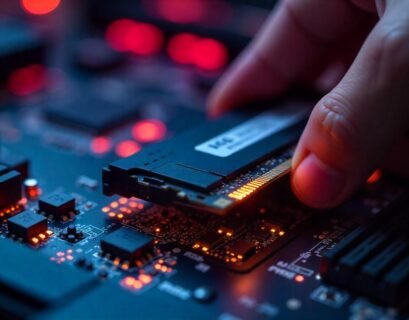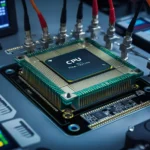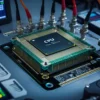In the rapidly evolving landscape of technology, software architecture stands as a critical cornerstone that underpins today’s digital solutions. The burgeoning demands for scalable, reliable, and efficient applications necessitate a thorough understanding of core components within modern software architecture. These components not only facilitate the seamless integration of various systems but also unlock a realm of possibility for innovation and efficiency. In this comprehensive exploration, we will delve into the roles, relationships, and future implications of core components in contemporary software architecture.
Understanding Core Components
At its essence, software architecture can be viewed as a blueprint for both the structure of a software system and the relational mapping of its core components. These components can broadly categorize into four main areas: Frontend, Backend, Middleware, and Data Management. Each area plays a unique role and possesses distinct technical innovations driving the evolution of software architecture.
1. Frontend Components
Frontend components are the part of software architecture that users interact with directly. This layer primarily involves the graphical user interface (GUI) and user experience (UX) design. Modern frontend frameworks, such as React, Angular, and Vue.js, have revolutionized how developers create engaging interfaces.
Industry Insight
As technology progresses, users demand more intuitive and responsive interfaces. Thus, the importance of tools like Progressive Web Apps (PWAs) and Single Page Applications (SPAs) has surged. PWAs enhance user engagement by providing a mobile-app-like experience on the web, while SPAs improve loading times and fluid interactions.
Technical Innovations
Recent innovations such as server-side rendering (SSR) and static site generation (SSG) have emerged to cope with performance issues and SEO challenges. These approaches allow developers to serve pre-rendered HTML content to users, drastically improving load times and search visibility.
2. Backend Components
The backend forms the backbone of any application, handling business logic, database interactions, authentication, and overall data processing. Here, technologies like Node.js, Python’s Flask or Django, and Java’s Spring Boot reign supreme.
Industry Insight
With the inception of microservices architecture, the backend landscape is increasingly characterized by modularity. This approach allows teams to develop, deploy, and scale components independently, thereby accelerating the deployment process. The rise of serverless computing is another trend, permitting developers to focus on code without managing the underlying server infrastructure.
Technical Innovations
Containerization, particularly through Docker and Kubernetes, has transformed backend deployment, promoting consistency across environments. This technology enhances development workflows and simplifies scaling applications in response to real-time traffic demands.
3. Middleware Components
Middleware acts as the intermediary layer facilitating communication between various software components. It encompasses a wide range of services including messaging systems, API gateways, and enterprise service buses (ESBs).
Industry Insight
With the proliferation of distributed architectures, middleware has become critical in maintaining data flow coherence. The rise of event-driven architectures (EDAs) exemplifies this, where systems communicate via events, thereby enabling decoupled interactions and improved scalability.
Technical Innovations
Technologies such as GraphQL and gRPC have emerged to streamline APIs, offering more robust, efficient, and flexible communication methods compared to traditional REST APIs. GraphQL’s ability to allow clients to request only the data they need addresses performance concerns and minimizes data transfer.
4. Data Management Components
Data management is integral to software architecture, encompassing processes of data storage, retrieval, and manipulation. This component’s effectiveness determines application performance and reliability.
Industry Insight
As companies capture vast amounts of data, Data Lakes and Data Warehouses have surged in importance. These solutions not only simplify data management but also enable businesses to derive actionable insights through analytics.
Technical Innovations
With the rise of databases tailored to specific use cases, NoSQL databases (like MongoDB and Cassandra) have gained prominence. They offer flexibility in handling unstructured data, essential for modern applications.
Future Outlook: The Evolving Role of Core Components
The core components of software architecture are not static; they evolve alongside technological advances and changing user expectations. As we look ahead, several key trends will shape the future landscape of software architecture.
1. Increased Emphasis on Automation
In an era where speed is critical, automation in software deployment through Continuous Integration/Continuous Deployment (CI/CD) pipelines will become the norm. Tools like Jenkins, CircleCI, and GitHub Actions are paving the way for reducing human error and enhancing deployment efficiency.
2. Rise of Artificial Intelligence
Artificial intelligence (AI) and machine learning (ML) are beginning to play pivotal roles in software architecture. They automate decision-making processes and operational efficiencies across components, particularly in data management and user experience. Future architecture may integrate AI at the core, transforming traditional components into intelligent entities.
3. Enhanced Security Frameworks
With increasing cyber threats, security needs to be embedded at every layer of software architecture. The adoption of DevSecOps practices will become more prevalent, integrating security measures from the inception of software design.
4. Greater Interoperability
As organizations increasingly adopt hybrid and multicloud environments, the ability of core components to interoperate seamlessly will be crucial. Innovations that promote interoperability, such as Service Mesh frameworks (e.g., Istio), will facilitate connections between microservices and services across diverse environments.
5. Edge Computing
Edge computing minimizes latency by processing data closer to where it is generated. This shift will transform how backend components interact with data management systems, fostering real-time data processing demands.
The Importance of Sustainable Architecture
As technology continues to advance, sustainability in software architecture will take center stage. Developers will need to consider energy-efficient practices, minimizing resource utilization, and optimizing application performance. Architecture that prioritizes sustainability will not only benefit the environment but also reduce operational costs.
Conclusion: Unlocking the Future
As we advance into a future dominated by technological innovations, understanding the role of core components in modern software architecture becomes paramount. These components are not merely building blocks; they are catalysts for creativity, efficiency, and adaptability. By embracing the trends of automation, AI integration, robust security measures, and enhancing interoperability, organizations can position themselves competitively in an increasingly complex digital landscape.
A robust software architecture serves as the bedrock upon which scalable and resilient systems are built. In this dynamic ecosystem, each component must be carefully chosen, designed, and executed to facilitate synergy, ensuring the seamless delivery of services that meet user demands. The future is bright for software architecture, and as we unlock the potential of its core components, we also unlock a world of opportunities for innovation, growth, and sustainability.
By focusing on these essential elements, we find ourselves at the forefront of technology’s evolution, equipped to harness its potential and rethink what is possible. As architects of software, the path ahead invites us to innovate, collaborate, and imagine the future of technology without limits.


















